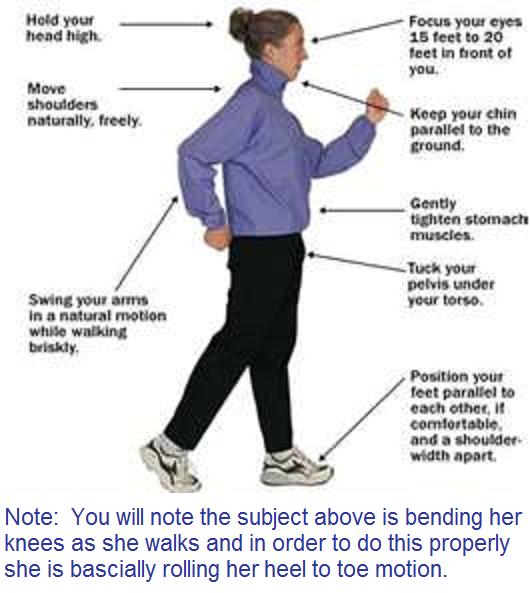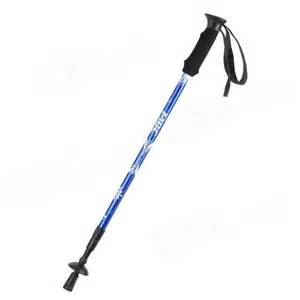Posturized Exercises
There is an on going controversy
between the medical establishment and the medical community that subscribe to
the idea of taking a conservative approach before they advocate what could
be considered the proverbial frying pan, like risky surgery. This is
where we
have been motivated to consider Posturized exercises in a conservative approach
before considering the more aggressive modalities.
There is a term that is used in many
medical challenges that are referred to as "idiopathic" that you will research
is where the diagnoses for a problem comes up dry, or at the least in question
that puts the onus of responsibility regarding treatment in the hands of the
patient as they walk out of the Doctors office. Buying time with symptomatic treatments taking the place of
delving into what the cause of the problems may be is a normal course, let alone
discovering in the case of spinal issues that improper balance and posture
could be the underlying issue causing the problem. As I recently
told my better half, wouldn't it be criminal if a patient went through serious
aggressive treatments that could result in permanent disability when a
relatively short period of a Posturized exercise program proved to alleviate a
condition, let alone solve it. Again don't be confused when you
could be exercising and not making any headway when the fact of the matter is
that improper exercising can exacerbate a problem and put a negative connotation
on exercise itself or at the least discourage the patient from researching their
problem that could be alleviated or perhaps solved with proper exercising.
In many instances conservative
treatments for a period of time could be the smartest way to go, especially if
there is not an urgent issue involved.
The spine in particular is a perfect
example where problems can be put on hold while conservative treatments are
prescribed and implemented.
Posturized Exercises
 Posturized
exercises relate to correcting imbalances in the muscle, skeletal and nerve complexes
that can be affected simply by positioning in a natural, usually straight erect manner
that when exercise is implemented the muscle, skeletal and nerve complex is enhanced.
The body was engineered to operate at a max and comfortable manner
without complicating consequences if poor exercises and lifestyle does not interfere
with the process.
Posturized
exercises relate to correcting imbalances in the muscle, skeletal and nerve complexes
that can be affected simply by positioning in a natural, usually straight erect manner
that when exercise is implemented the muscle, skeletal and nerve complex is enhanced.
The body was engineered to operate at a max and comfortable manner
without complicating consequences if poor exercises and lifestyle does not interfere
with the process.
In the image to the left the gal is
displaying the "right way to walk" We have recently added
walking sticks to our regimen. Walking sticks used by millions in Europe by the way create a balance for most when
trying to solve a related problem. If a person followed the principles in
the image to the left they would automatically create a maximum posturizing
exercise session as the correct way to walk simply places all the body parts in
proper position to take advantage of the exercise session. On the other
hand someone that is favoring one side of the body or another could very well
exert excess tension on parts of the body that could be counter productive to
balanced healing. This is where walking sticks covering both sides of
the body comes into play versus one stick or a cane that can really exacerbate a
problem. Even if you are hurting on one side you have to effect a balance
on both sides of the problem area. We believe that slowly bringing back an
imbalanced area with posturized exercise sessions will not be depreciated by dividing
the effort between areas that are hurting and opposing areas that are not.
sticks used by millions in Europe by the way create a balance for most when
trying to solve a related problem. If a person followed the principles in
the image to the left they would automatically create a maximum posturizing
exercise session as the correct way to walk simply places all the body parts in
proper position to take advantage of the exercise session. On the other
hand someone that is favoring one side of the body or another could very well
exert excess tension on parts of the body that could be counter productive to
balanced healing. This is where walking sticks covering both sides of
the body comes into play versus one stick or a cane that can really exacerbate a
problem. Even if you are hurting on one side you have to effect a balance
on both sides of the problem area. We believe that slowly bringing back an
imbalanced area with posturized exercise sessions will not be depreciated by dividing
the effort between areas that are hurting and opposing areas that are not.
Posturized exercises can easily be applied
to most exercises and devices. I discovered my personal error that even my tread mill
sessions where I was not observing a straight up stance. I was stooping a bit
and this was not conducive to proper healing. Found the same problem with the 300 stand ups I was doing and the
list goes on. Just bending over a little bit will affect the quality of
the therapy, let alone crouching over a bikes handlebars or walking around all
day staring down on some imbecilic communications device.
Muscle Imbalance
There are
many reasons, age being one of them, sports activities that favor certain parts
of the physique and neglect other
parts especially when they oppose one another that promote muscle
imbalance. Calves on the outsides of the legs and insides of the
calves are one example. One of the first meetings I personally had when I
addressed my issues was when the Doctor discovered that my calf muscles were
very tight on the outsides and very weak on the insides. This condition produced
a perfect storm that encouraged shin splints where the imbalance produced and
facilitated the tearing of the sheaths between the muscle and bone. The
theory was that my 35 years of paddle ball play with its lateral movement
produced this muscle imbalance that resulted in the shin splints and a host of
other issues.
Diet
Of course diet plays a huge part in
certain cases where large amounts of meat are consumed as well as refined sugar
and grains that provoke an acid condition that triggers off the body to cannibalize
calcium from the soft targets within the body. The vertebra areas
being an intricate part of the skeletal can suffer as well along with the knee and hip joints. Again the
spine along with the spinal canal can be negatively affected resulting in some
cases into spinal stenosis that shortly results in nerve issues. A diet
that is predominantly alkaline versus acid will prevent the deadly cannibalization
factor that an acid diet provokes. Eat your fruits and veggies guys.
The Bonus
Some times you embark on a mission
such as my wife and I have where we decided to really give conservative
treatments a college try. We knew that after years and years of abuse in
regard to posture let alone practicing Posturized exercises, that it would take
some time perhaps years to regain the condition we were pursuing. We
noticed that shortly after starting our posturizing exercise efforts that just
normal walking efforts like walking in the house or even pushing a shopping cart
in the supermarket we were inadvertently standing erect with proper
posture. We were actually training our bodies to stand up straight
with the exercises. I believe that this habit will accelerate some of the structural
problems that have contributed to our spinal stenosis concerns etc.
 Incidentally
I have run this across some medical contacts recently regarding the connection
between muscle, skeletal and nerve imbalances with spinal implications. I can't
say that my theories regarding Alzheimer's and spinal issues met with a
resounding reception. You talk about the deer in the headlights.
When you study the process of spinal stenosis and
Incidentally
I have run this across some medical contacts recently regarding the connection
between muscle, skeletal and nerve imbalances with spinal implications. I can't
say that my theories regarding Alzheimer's and spinal issues met with a
resounding reception. You talk about the deer in the headlights.
When you study the process of spinal stenosis and signals to and from the brain you have to be brain dead (no pun intended) to at
least consider the possibility that spinal health can have a significant bearing
on the health of the brain and the first thing I would suggest to anyone that
has the misfortune in dealing with a family member that has the signs of onset Alzheimer's
is to insist that they straighten out their posture and concentrate on spinal
alignment whether you believe our Alzheimer's connection or not.
signals to and from the brain you have to be brain dead (no pun intended) to at
least consider the possibility that spinal health can have a significant bearing
on the health of the brain and the first thing I would suggest to anyone that
has the misfortune in dealing with a family member that has the signs of onset Alzheimer's
is to insist that they straighten out their posture and concentrate on spinal
alignment whether you believe our Alzheimer's connection or not.
 Posturized
exercises relate to correcting imbalances in the muscle, skeletal and nerve complexes
that can be affected simply by positioning in a natural, usually straight erect manner
that when exercise is implemented the muscle, skeletal and nerve complex is enhanced.
The body was engineered to operate at a max and comfortable manner
without complicating consequences if poor exercises and lifestyle does not interfere
with the process.
Posturized
exercises relate to correcting imbalances in the muscle, skeletal and nerve complexes
that can be affected simply by positioning in a natural, usually straight erect manner
that when exercise is implemented the muscle, skeletal and nerve complex is enhanced.
The body was engineered to operate at a max and comfortable manner
without complicating consequences if poor exercises and lifestyle does not interfere
with the process. sticks used by millions in Europe by the way create a balance for most when
trying to solve a related problem. If a person followed the principles in
the image to the left they would automatically create a maximum posturizing
exercise session as the correct way to walk simply places all the body parts in
proper position to take advantage of the exercise session. On the other
hand someone that is favoring one side of the body or another could very well
exert excess tension on parts of the body that could be counter productive to
balanced healing. This is where walking sticks covering both sides of
the body comes into play versus one stick or a cane that can really exacerbate a
problem. Even if you are hurting on one side you have to effect a balance
on both sides of the problem area. We believe that slowly bringing back an
imbalanced area with posturized exercise sessions will not be depreciated by dividing
the effort between areas that are hurting and opposing areas that are not.
sticks used by millions in Europe by the way create a balance for most when
trying to solve a related problem. If a person followed the principles in
the image to the left they would automatically create a maximum posturizing
exercise session as the correct way to walk simply places all the body parts in
proper position to take advantage of the exercise session. On the other
hand someone that is favoring one side of the body or another could very well
exert excess tension on parts of the body that could be counter productive to
balanced healing. This is where walking sticks covering both sides of
the body comes into play versus one stick or a cane that can really exacerbate a
problem. Even if you are hurting on one side you have to effect a balance
on both sides of the problem area. We believe that slowly bringing back an
imbalanced area with posturized exercise sessions will not be depreciated by dividing
the effort between areas that are hurting and opposing areas that are not.  signals to and from the brain you have to be brain dead (no pun intended) to at
least consider the possibility that spinal health can have a significant bearing
on the health of the brain and the first thing I would suggest to anyone that
has the misfortune in dealing with a family member that has the signs of onset Alzheimer's
is to insist that they straighten out their posture and concentrate on spinal
alignment whether you believe our Alzheimer's connection or not.
signals to and from the brain you have to be brain dead (no pun intended) to at
least consider the possibility that spinal health can have a significant bearing
on the health of the brain and the first thing I would suggest to anyone that
has the misfortune in dealing with a family member that has the signs of onset Alzheimer's
is to insist that they straighten out their posture and concentrate on spinal
alignment whether you believe our Alzheimer's connection or not.